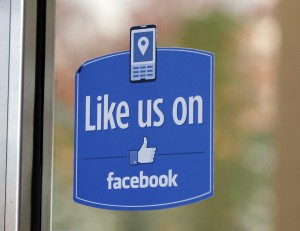IN the past few years, social media “predictions” have been a popular subject to approach, especially towards the end of the year.
With social media being such a “new” phenomenon, it was easy getting caught up in it. Will next year see Twitter trump Facebook, or will Google come up with something to kill off its blue nemesis (it tried, and failed miserably in 2011)?
Who can blame the experts, analysts or academics their predictions? After all, isn’t this the era of new media technologies that move so fast there’s always something new to look into?
Well, not really.
If anything, 2011 has taught us that it’s not the mediums and the networks we should be focusing on.
There was the prediction that this was the year of geolocation – you could tag your tweets with data about where you were, while Facebook’s “check-in” was supposedly going to crush Foursquare. Except that it never really took off, so Facebook essentially killed it and Foursquare remains a niche network.
Some people who saw this coming decided that it would be more accurate to look at it from a business point of view. After all, how many new networks can one deal with? So, while predictions about which social media network will go public entertained us all year, we’re actually still guessing when all of it will happen.
I suspect that while we obsessed over what was coming next – in an effort to one up each other – we forgot to look at what was already at hand.
The biggest mistake in 2011 was asking what was coming next when we should have focused on what the current big guns had in store.
If we just looked at the more mainstream networks, Facebook introduced the social graph and its Timeline, which look set to change the way the Internet functions forever.
Twitter gave us several new looks – not just via its web version but also with its native apps for the iPhone and BlackBerry.
Then more recently, we saw the re-emergence of the “anti-social social network” Path, an iPhone app that once allowed you to add only 50 friends (its reincarnation allows 150). The first time it launched, it died a slow death but rose from the ashes over the past few weeks by “borrowing” ideas from successful applications like Facebook (with its own timeline feature) and Instagram’s photo manipulation concept.
The best part is that it allowed you to connect each update via its application with the most popular existing networks – Facebook, Twitter, Tumblr and Foursquare.
It’s early days still but it looks set to be the next iPhone app du jour. Why? Well, it’s because it acknowledges the power of the aforementioned social networks and attempts to survive by complementing them as opposed to competing with them.
If my interpretation of what Path is doing is correct, then 2011 would have been the year that the biggest social networks made their mark and withstood any of its competitors – Google+ and Diaspora (what?).
So where does this leave us as 2012 approaches?
I wouldn’t dare make any predictions, really. At this stage, I feel like we’ve been obsessing over social media so much that we’ve forgotten the largest digital ecosystem in which it resides.
Along that vein, I would say that we can look forward to 2012 as the year where digital users empower themselves. We’ve already seen how social media assisted in protests – either in the Arab world or in many Western countries via the Occupy movement – so much so that Time magazine named the “protestors” as its person of the year.
My vision is that next year, we move forward from there and empower ourselves to be active users of social media by being more conscious of how we engage online, be aware of what we’re “liking” and retweeting and figure out how else we can be more efficient users of social media, than just following the trends.
I won’t predict that for 2012, but I would definitely hope for it.
* Niki Cheong is pursuing his Master’s degree in Digital Culture and Society in London. Connect with him via www.nikicheong.com or www.twitter.com/nikicheong.


Tell us what you think!